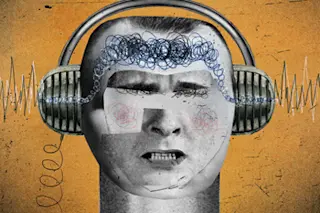Some decades ago, a salesguy in a high-end audio shop badly misjudged my socioeconomic status and treated me to an ultrahigh-quality recording of an obscure jazz ensemble, played on a $10,000 audio system in an acoustically perfect room. I staggered out goose-bumped and hair-raised, a newly minted audiophile wannabe. I was sure that this was just the beginning of a journey into ever-more-amazing sound experiences. The equipment in that room consisted of glowing tubes in big metal cases, vibrating domes in massive wood cabinets, and spinning platters of plastic. No doubt technological innovation would one day shrink this clunky system into something small enough to carry around and cheap enough to avoid triggering the reckless-behavior clause in my prenup. More important, I was sure that even grander realms of audio quality lay ahead. By 2011, who could imagine what sort of incredible sonic delights would await?
Technology certainly has come ...















